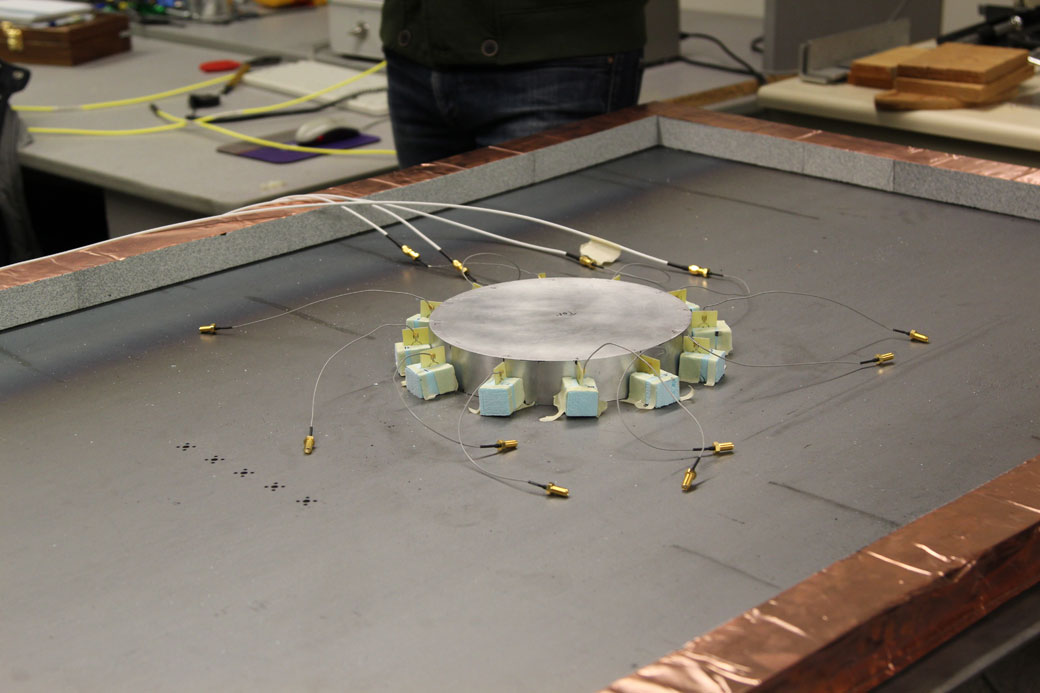TORONTO – Shields up. Cloaking device engaged.

This could be a reality thanks to two researchers from the University of Toronto.
Professor George Elftheriades and PhD student Michael Selvanayagam from The Edward S. Rogers Sr. Department of Electrical and Computer Engineering have developed a device that is capable of hiding, or cloaking, an object.
The idea of a cloaking device was first successfully attempted by Duke University in 2006. Their cloak deflected microwaves and bent them around an object, thereby hiding it. In 2012, researchers from the university made a second one which improved upon the earlier design. Their application held promise for bending light.
But Elftheriades and Selvanayagam wondered if, instead of bending the waves, they could approach it in a different way.
“We looked at the idea of active cloaking,” Selvanayagam told Global News. “So instead of using materials to bend the light around the object, we thought what if we could put sources around the object and then these sources would radiate waves, and those waves would interfere and cancel out the light around the object.”

Get daily National news
First they did an experimental demonstration with radio frequency waves.
They attached a group of antennas that generated an electromagnetic field to a metal cylinder. The antennas successfully cancelled out any waves that scattered off it.

The advantage to their process is that theirs is relatively lightweight and compact. Instead of having to envelop an object in layers of specifically-created materials – as the Duke technology would require – antennas could be attached to it. The U of T prototype also has the advantage of being scalable, thereby being easily adaptable for objects of varying sizes.
The cloaking device would be useful for military applications, such as hiding tanks or aircraft. It could also be used for eliminating obstacles from disrupting signals.
The research is still in its infancy. The current model works only if the bandwidth is known ahead of time. The next step would be to make a cloak that could adapt to varying bandwidths.
Though the technology has been proven to work on radio waves, it is possible that this method could also be used with light.


Comments